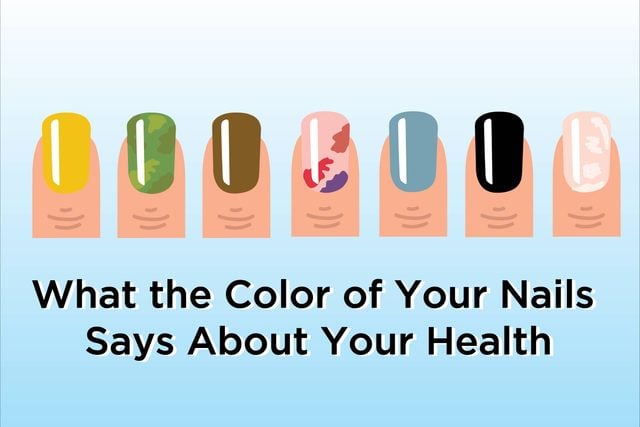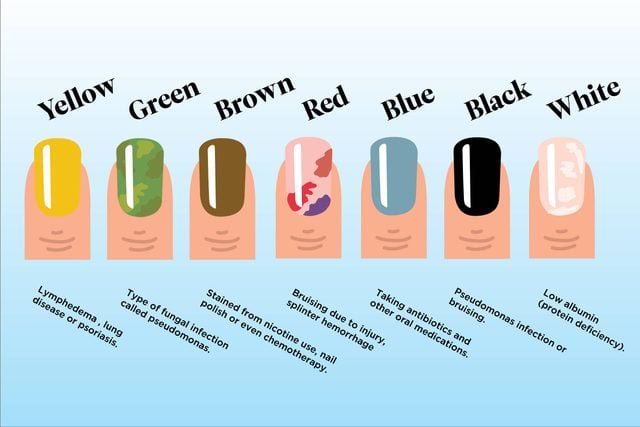What the Color of Your Nails Says About Your Health
Updated: Feb. 20, 2019
You can paint your nails any color you want, but a change in their natural color could mean trouble.

When something is wrong with your health, one visible clue is nail discoloration. Healthy nails have a pinkish hue and are evenly colored. Abnormal coloring varies depending on the cause, which may be a problem affecting the nails or a condition somewhere else in the body. Here are some examples of what can lead to nail discoloration:

Yellow nails
Nails can become yellowed due to lymphedema (a buildup of lymphatic fluid in tissues), lung disease or psoriasis.
Green nails
What is known as “green nail syndrome” is often caused by a type of fungal infection called pseudomonas. Find out how to get rid of toenail fungus.
Brown nails
Nails may become stained brown from nicotine use, nail polish or even chemotherapy.
Red nails
Bruising due to injury can turn part of a nail purple. Red or purple streaks can also result from a splinter hemorrhage (a little bit of bleeding that occurs from under the nail).
Blue nails
Nails can turn blue as a result of taking minocycline (antibiotics) and from several other oral medications.
Black nails
A severe pseudomonas infection or bruising are common causes, but melanoma is also a possibility. A black nail should be seen by a dermatologist.
White nails
White nails can be hereditary or a sign of low albumin (protein deficiency). White streaks may develop from trauma to the nail. Nails can also fade and turn white from vitiligo, a skin condition caused by a loss of pigmentation.
Information provided by the Canadian Dermatology Association.